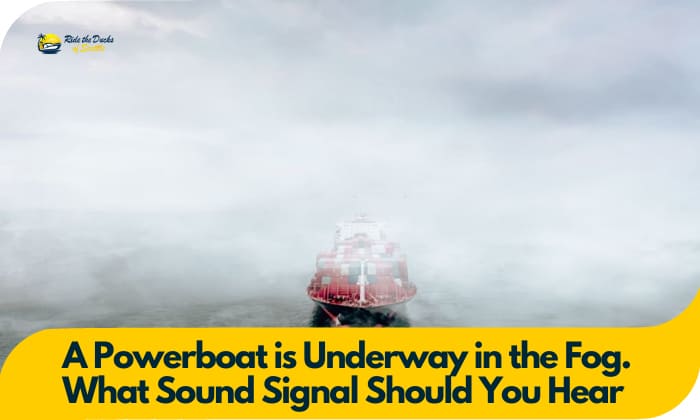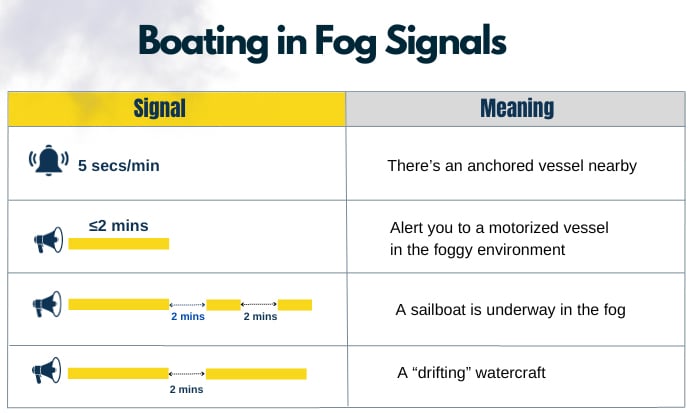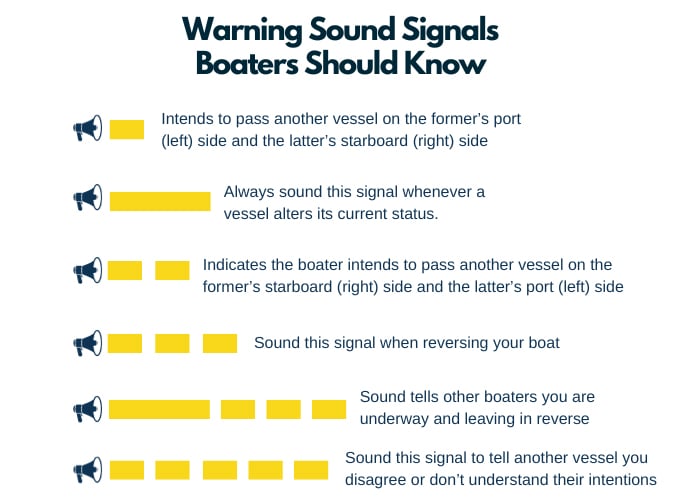When a powerboat is underway in the fog, what sound signal should you hear? You might laugh at the boater posing this question. However, it’s a valid query, especially among newbies and aspiring boat owners.
Although seasoned mariners know that a loud, 4- to 6-second-long horn blast every two minutes is necessary in foggy conditions, greenhorn boaters might not.
Memorizing navigation rules is often challenging for beginners. So, how else can motorboats signal their presence in thick fog?
Read on.
Fog Sound Signals for Locations
According to the Boat US Foundation, mariners must be familiar with sound signals rules to ensure safety in seas and waterways.
So, what ship horn signals should you recognize, especially during a period of restricted visibility (i.e., heavy rains and thick fog)? Let’s look at them—note that a long blast should last 4–6 seconds, whereas a short one is about 1–2 seconds.
- One 5-second bell rings every one minute
A rapidly ringing bell for five seconds every minute indicates there’s an anchored vessel nearby. If a gong sound follows the bells, it means the boat is longer than 100 meters.
- One long blast every two minutes
Hearing one prolonged blast every two minutes should alert you to a motorized vessel in the foggy environment. You might want to slow down and use your boat’s radar to validate your assessment.
- One long blast and two short blasts in succession every two minutes
One long horn blast, followed by two shorter ones, is the main signals used by sailing vessels. When you hear this sound in foggy weather or any condition of poor visibility, you’ll know that a sailboat is underway in the fog.
This signal can also mean the vessel can’t maneuver properly or is being towed, so steer clear to avoid a collision.
- Two long blasts every two minutes
In conditions of reduced visibility, two consecutive long blasts every two minutes indicate a “drifting” watercraft.
The vessel might be off the docks or not anchored, but it isn’t moving on its power. You might want to be extra careful because a drifting watercraft is at the mercy of the currents. There’s a good chance you might collide with this boat if you misread the water flow.
Warning Sound Signals Boaters Should Know
These fog signals for vessels aren’t the only ones every boater must know. They must also learn other l warning sound signals.
- One short blast – The boater sounding this signal intends to pass another vessel on the former’s port (left) side and the latter’s starboard (right) side.
- One long blast – Whenever a vessel alters its current status, the captain always sounds this signal. For example, you sound a prolonged blast when leaving the dock slip, approaching a river or waterway bend, and getting underway.
- Two short blasts – This sound signal indicates the boater intends to pass another vessel on the former’s starboard (right) side and the latter’s port (left) side.
- Three short blasts – You sound this signal when reversing your boat, such as backing from a slip.
- One long blast + three short blasts – This navigation sound tells other boaters you are underway and leaving in reverse.
- Five short blasts – You sound this signal to tell another vessel you disagree or don’t understand their intentions.
Conclusion
A powerboat is underway in the fog, what sound signal should you hear? You should note a loud sound lasting four to six seconds at a 2-minute interval. You might even hear 5-second-long bell rings or whistle blows in some instances.
Recognizing different boat horn meanings is essential to safety for you and other boaters. After all, nobody wants to turn a blissful boating adventure into a tragedy. Thankfully, the sound patterns are easy to memorize, allowing you to consider them to heart.

Ten years of enjoying countless trips on boats never made me love them any less! So I am here to put all those experiences into good use for other boaters who want to have a safe and fun trip with their friends and families.



